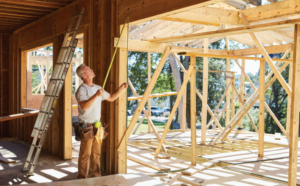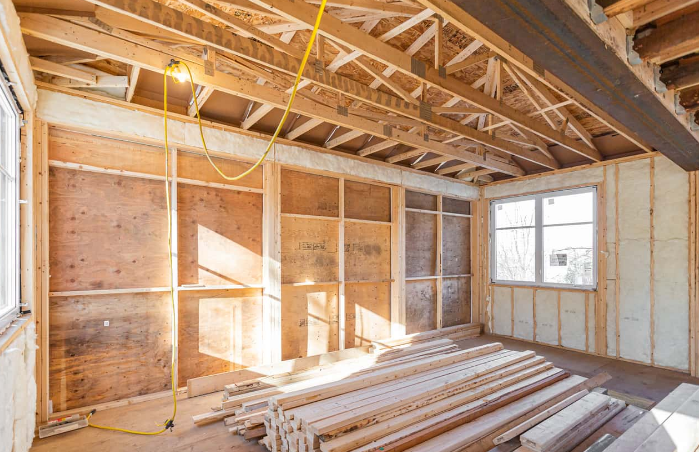Renovating with wood can transform a space, adding warmth, character, and natural beauty. Whether you’re planning a full-scale remodel or a small renovation project, incorporating timber elements can make a significant difference. In this article, we will explore some valuable tips and tricks to help you navigate the world of wood renovation and achieve stunning results.

Plan and Research
Before starting any renovation project involving timber, it’s crucial to have a clear plan in place. Consider the purpose of the renovation, your budget, and the desired outcome. Research different wood types, finishes, and construction techniques to understand their characteristics and suitability for your project. Gathering inspiration from magazines, websites, and social media platforms can also help you define your style and make informed decisions.
Choose the Right Wood Species
When renovating with wood, selecting the right timber species is crucial. Different types of wood have varying characteristics in terms of color, grain pattern, durability, and suitability for specific applications. Consider the aesthetics you want to achieve and the environmental conditions of the space. Hardwoods like oak, maple, and walnut are popular choices for furniture and flooring due to their durability and timeless appeal. Softwoods such as pine and cedar are great for trim work and paneling. Research different timber species and consult with experts to make an informed decision.
Prepare and Treat the Wood
Before using timber in your renovation project, it’s essential to properly prepare and treat it. Ensure the timber is clean, dry, and free from any dirt, debris, or old finishes. Sanding the surface smoothly will provide a clean canvas for staining, painting, or sealing. Applying a timber conditioner or primer can enhance the wood’s ability to absorb stains or paint evenly. Proper preparation and treatment will ensure the longevity and beauty of your timber elements.
Embrace Wood Accents
Moreover, renovating with wood doesn’t necessarily mean fully replacing existing structures. Embracing timber accents can be a cost-effective way to revitalize your space. Consider adding timber trim, crown molding, or baseboards to create a sophisticated and finished look. Installing timber paneling on walls can instantly bring warmth and texture to a room. For a striking focal point, incorporate a wood feature wall or a fireplace mantel made from reclaimed timber. By strategically using timber accents, you can achieve a balance between modern aesthetics and timeless charm.
Consider Engineered Wood Products
When renovating with wood, consider the advantages of engineered timber products. Engineered timber, such as plywood or laminated timber, offers stability, strength, and resistance to warping or shrinking. It is an excellent choice for structural elements like subfloors, roofing, and beams. Additionally, using engineered timber products can help conserve natural resources by making the most of wood veneers and incorporating sustainable manufacturing processes.
Protect Wood from Moisture
Wood is vulnerable to moisture, which can lead to warping, rot, and mold growth. In areas prone to moisture, such as bathrooms or kitchens, it’s crucial to protect the timber properly. Apply a moisture-resistant finish or sealant to prevent water absorption. Ensure proper ventilation in enclosed spaces to minimize humidity levels. Use waterproofing techniques when installing wood in high-moisture areas like shower surrounds or exterior decking. Regular maintenance, including checking for leaks, repairing caulking, and applying protective coatings, will help preserve the beauty and integrity of your timber elements.
Working with Reclaimed Wood
Reclaimed wood adds character and a sense of history to any renovation project. When working with reclaimed timber, inspect it thoroughly for structural integrity and potential issues such as hidden nails or insect infestation. Sanding and refinishing may be necessary to bring out its natural beauty, but be cautious not to remove too much of the aged patina that adds charm to the timber.
Understanding Wood Grain
Furthermore, wood grain refers to the pattern formed by the growth rings in the timber. It is essential to understand the grain direction when cutting and joining timber pieces. For a cohesive look, align the grain pattern on adjoining surfaces to create a seamless appearance. Additionally, consider the direction of the timber grain when applying stains or finishes, as it can affect the final color and visual appeal.
Don’t Forget About Maintenance
Wood is a natural material that will require some maintenance over time to keep it looking its best. Make sure to regularly clean your surfaces and timber avoid using harsh chemicals that can damage the finish. You may also need to reapply stain or finish over time to maintain its appearance and protect it from wear and tear.
Conclusion
Renovating with wood offers endless possibilities for enhancing your home’s charm and character. By following these tips and tricks, you can navigate the world of timber renovation with confidence. Whether you’re adding timber accents or undertaking a full-scale project, the natural beauty, and versatility of timber will undoubtedly elevate your space to new heights.


